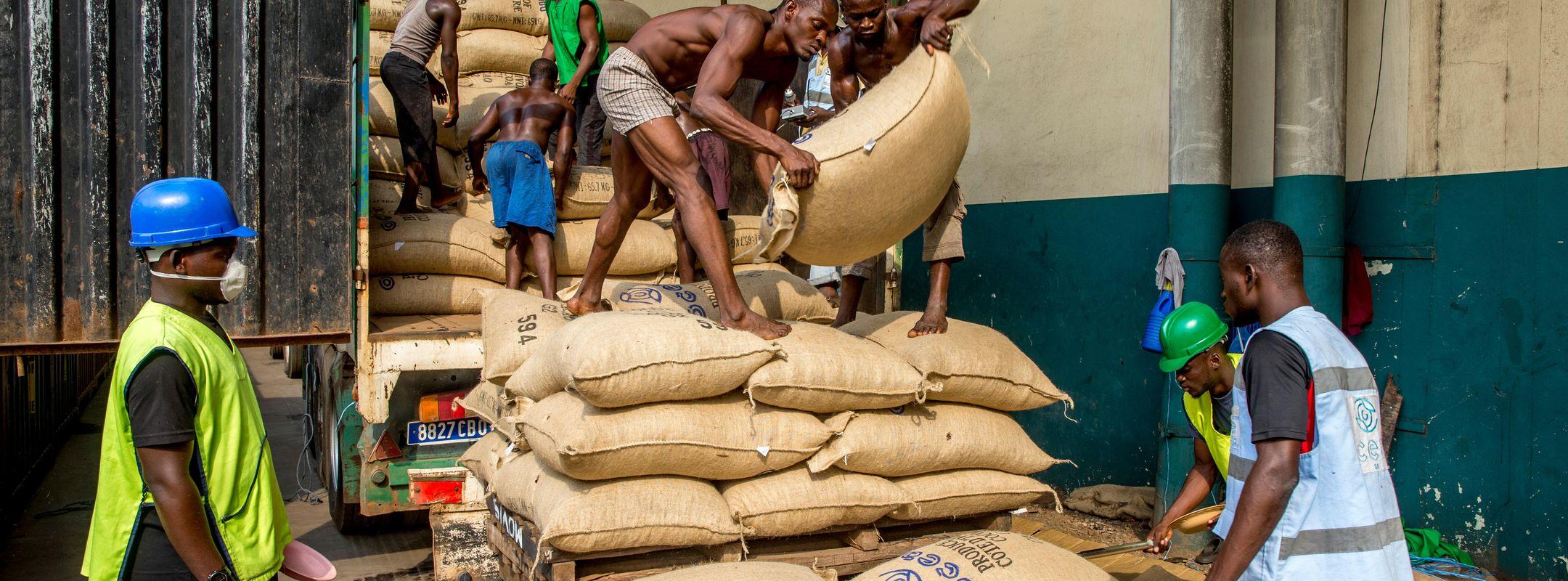Cocoa exports drive deforestation in Côte d’Ivoire
10 Nov 2022
7 min read
Also in:
FrançaisCommodity traders Cargill, Olam, Barry Callebaut and Touton are exposed to high levels of deforestation in Côte d’Ivoire (Ivory Coast), where 2.4 million hectares of forest has been cleared in the past two decades primarily to produce cocoa for Europe’s chocolate manufacturers.

Unloading sacks of cocoa at Abidjan port, Ivory Coast (Godong/Alamy Stock Photo)